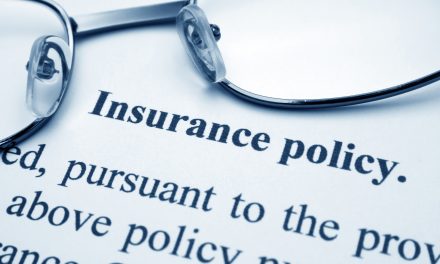
Hit in the Head, Concussed, There is More to Do Than Rest

Whether your patient presents to your office because he bumped his head after taking a nose dive off his bunk bed, or he participated in an intense baseball game that is interrupted by a fast pitch to the head, or he got into a car accident and suffers from a concussion, there is more to do than go to bed and rest. It seems as though every week there is a new study, article or press release about concussion.
We hear about things such as: in a study of Norwegian soccer players, 81% had impairment of attention, concentration, memory, and judgment, ranging from mild to severe; a new study from the Archives of Pediatrics & Adolescent Medicine found that, “children who suffer concussions may experience lingering problems with memory and attention, even 12 months after the injury.” The topic is everywhere.
There are many symptoms that may occur post-concussion. Some of the more common ones include: headache or head pressure; nausea or vomiting; balance problems; dizziness; double or blurred vision sensitivity to noise and/or light; confusion; brain fog; feeling sluggish; appearing dazed or stunned; moving clumsily; slow to answer questions; or just not feeling right.
Today we know that rest alone doesn’t have any greater influence on a faster recovery from a concussion than if we didn’t rest. What we typically forget is that we can help facilitate the speed in recovery time and reduce brain inflammation after such an injury has occurred through the use of supplementation. Some well documented and effective products include fish oils, Boswellia, N-acetyl cysteine, resveratrol, Vitamins D, C and B complex, Lion’s Mane, creatine, magnesium, BCAA’s and green tea. Certainly, foods containing these substances would make great recommendations, both pre- and post-concussion. All are worth considering, and a few will be explored here.
The brain itself is made up mostly of fatty acids; the most predominant, making up 40% of these fatty acids, is docosahexaenoic acid (DHA). Eicosapentaenoic acid (EPA) and DHA given to subjects with post-concussive symptoms will supply the needed fatty acids required for brain cell healing and help reduce the inflammatory response activated by a traumatic brain injury. (1) Adding Alpha-linolenic acid aids in the healing response, since it is also a structural component in every organ of the body. Omega-3s also contribute and enhance neuronal cell fluidity and stability and act as part of the neurotransmitter system. Fish, walnuts, and flaxseeds are great additions to the diet, so that we can increase levels through food for the concussed patient.
Researchers found that omega-3 EFAs have been effective in decreasing the toxic effects of glutamate, which is typically released in large amounts after a traumatic brain injury and can lead to the death of still-surviving brain cells within the area of the injury. (2) It is also believed that omega-3 EFAs may have a suppressive effect on ion channels and prevent cell death. Another finding is that they stabilize the cell membrane by inhibiting the release of arachidonic acid, thus protecting the cell membrane from damage, because arachidonic acid can convert to inflammatory prostaglandins.
In The Journal of Neurosurgery, Dr. Julian Bailes and Dr. Barry Sears reported that EPA/DHA fish oil supplementation in rats after head injuries reduced the observed symptoms seen with a concussion: “Animals receiving the daily fish oil supplement for 30 days post-concussion had a greater than 98 percent reduction in brain damage, compared with the animals that did not receive the supplement,” Dr. Sears said. “It is hypothesized that the omega-3 fatty acids in the fish oil reduced the neural inflammation induced by the concussion injury.” Healing post injury requires tissue repair and anti-inflammatory intervention. “One implication of the study is that concussions, such as those that occur in football, may be best treated with immediate high-dose fish oil supplementation to reduce brain inflammation. The same may hold true of all brain trauma patients,” Sears said. Clinical studies have suggested a minimum of 3 grams of EPA and DHA, with some studies using 10 grams or more.
Resveratrol, a polyphenol that is found in various concentrations in many different plant sources, provides color to the skin of fruit such as raspberries and blueberries. The plant called Japanese Knot Weed, or polygonum cuspidatum, and the skins of red wine grapes, are believed to have the most concentrated amounts of resveratrol. (3) Resveratrol has significant anti-cancer, anti-inflammatory, antioxidant, and DNA-protective actions when consumed by animals and humans. (3)
In animal research done at the University of Pittsburgh, researchers found that 100 mg/kg resveratrol administered intraperitoneally after controlled brain injury provided significant behavioral protection in the rats tested. They showed improvements in motor performance and the testing of visuospatial memory. It was concluded that resveratrol could be identified as a potential therapy for human brain injury. It is known that resveratrol can effectively cross the blood brain barrier, increase cerebral blood flow, reduce inflammation and improve outcomes in animal models following multiple acute neurological traumas. Anxiety was also found to be reduced. Researchers at UT Southwestern Medical Center in Dallas are currently conducting a study on professional boxers to determine the ability of resveratrol to heal and repair the brain at a faster rate.
One of the most popular food supplements, creatine has been commonly used for gains in performance, including strength, and fat-free mass has made the grade for use to provide neuroprotection against ischemic and oxidative insults. Results from an experimental traumatic brain injury experiment demonstrated that chronic administration of creatine ameliorated the extent of cortical damage by as much as 36% in mice and 50% in rats. It was concluded that it increased mitochondrial membrane potential and decreased intramitochondrial levels of reactive oxygen species and calcium, while maintaining levels of adenosine triphosphate. It might relate to the mechanism responsible for neuronal loss after a traumatic brain injury and might help inhibit the acute and delayed neurodegenerative processes. (4)
The use of magnesium to treat brain injuries has been supported in multiple studies. It has been documented that magnesium therapy can facilitate recovery of chronic behavioral impairments. Studies have shown that brain magnesium levels fall 50% for 5 days after an injury to the central nervous system. Low magnesium levels commonly facilitate a secondary injury process such as inflammation, excitotoxicity, mitochondrial dysfunction, energy failure, edema formation, free radical production, and apoptosis.
Cells become less capable of providing sufficient energy for repair and restoration, leading to cell death. Post-traumatic administration of magnesium to restore normal magnesium homeostasis reduces neuronal cell death and increases the likelihood of recovery. The higher the level of magnesium, the greater potential for recovery. It is not uncommon for most patients to be deficient in magnesium prior to a traumatic brain injury, so pre- and post-supplementation may prove beneficial. Magnesium threonate may also be one of the best forms of magnesium to dose since it crosses the blood brain barrier and doesn’t exhibit the typical GI upset with a large dose. Some of the best food sources of magnesium include dark leafy greens, pumpkin seeds, squash, beans, lentils, avocados, and dark chocolate.
Traumatic brain injury, including concussion, is a leading cause of death in individuals under the age of 45 years, with an estimated incidence of death reported as 20–30 per 100,000 (per the U.S. CDC). The majority of TBI cases can be attributed to motor vehicle accidents, motorcycle accidents, bicycle accidents, and pedestrian injuries, as well as from injuries occurring in football, rugby, soccer, lacrosse, baseball, and hockey. Commonly we see patients suffering from symptoms and prolonged recovery due to a lack of adequate treatment. No longer is rest solely a plan by itself. With proper supplementation, both prior to and after an incident, our patients can decrease the potential for prolonged or chronic symptoms and can increase the potential for a speedier recovery.
References
- Wu A, Ying Z, Gomez-Pinilla F. Dietary omega-3 fatty acids normalize BDNF levels, reduce oxidative damage, and counteract learning disability after traumatic brain injury in rats. J Neurotrauma. 2004;21(10): 1457-1467.eicosapentaenoic acid (EPA) and decosahexaenoic acid (DHA).
- Yates A, Norwig J, Maroon JC, et al. Evaluation of lipid profiles and the use of omega-3 essential fatty acid in professional football players. Sports Health Multidiscip Approach. 2009;1(1):21
- Wang T., Van KC., Gavitt BJ., Grayson K., Lu Y., Lyeth BG., Pichakron KO. Restorative Neurology and Neuroscience. 2013; ahead of print
http://www.ncbi.nlm.nih.gov/pubmed/23835930 - Sullivan PG1, Geiger JD, Mattson MP, Scheff SW. Dietary supplement creatine protects against traumatic brain injury. Ann Neurol. 2000 Nov;48(5):723-9.
- Hoane, MR, Magnesium therapy and recovery of function in experimental models of brain injury and neu- rodegenerative disease.
- Bourre JM. Roles of unsaturated fatty acids (especially omega-3 fatty acids) in the brain at various ages and during ageing. J Nutr Health Aging. 2004;8(3):163-174.
- Mills JD, Bailes JE, Sedney CL, Hutchins H, Sears B. Omega-3 fatty acid supplementation and reduction of traumatic axonal injury in a rodent head injury model. J Neurosurg. 2011;114(1):77-84.
- Xiao Y, Li X. Polyunsaturated fatty acids modify mouse hippocampal neuronal excitability during excitotoxic or convulsant stimulation. Brain Res. 1999;846(1):112-121.
- Wang T, Van KC, Gavitt BJ, Grayson JK, Lu YC, Lyeth BG, & Pichakron KO (2013). Effect of fish oil supplementation in a rat model of multiple mild traumatic brain injuries. Restorative Neurology and Neuroscience.
- Maroon JC. The Longevity Factor: How Resveratrol and Red Wine Activate Genes for a Longer and Healthier Life. New York, NY: Atria; 2009.
- J Neurosurg. 2011 Jan;114(1):77-84. doi: 10.3171/2010.5.JNS08914. Epub 2010 Jul 16.Omega-3 fatty acid supplementation and reduction of traumatic axonal injury in a rodent head injury model.
- Mills JD1, Bailes JE, Sedney CL, Hutchins H, Sears B.
Go ḿ ez-Pinilla F. Brain foods: the effects of nutrients on brain function. Nat Rev Neurosci. 2008;9(7):568-578.

















